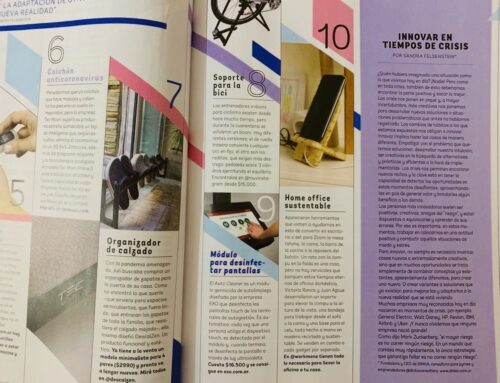“Tengo casi 70 años y ya estoy cansado” dijo Héctor, fundador y líder de la empresa alimentaria que, sin duda, pisa fuerte en el mercado. “Siento que es el momento de empezar a delegar más”, agregó.
Con 40 años en el mercado, la firma había transitado muchos cambios, fluctuaciones y crisis. Pero siempre había salido adelante gracias al empuje e intuición de quien la gestó, hacia la década de 1970. Disfrutar también formaba parte de la demanda: “Quiero viajar más, compartir más tiempo con mis nietos… pero el día a día me consume y, cuando me desligo un poco, las cosas no funcionan.”
El objetivo final era claro: lograr una delegación efectiva que permitiera romper con la “estructura de sol” que se había generado alrededor de Héctor durante toda la vida de la compañía. Era el momento de realizar un diagnóstico profundo de la situación para detectar las áreas clave de mejora.
Diagnosis and plan
Comenzamos a trabajar en la etapa de diagnóstico. Héctor parecía muy decidido a cambiar la forma de trabajar de la organización y el engranaje entre sus colaboradores. Realizamos una revisión integral de la compañía para identificar las áreas que requerían modificaciones y mejoras. Así, entrevistamos a los colaboradores más representativos, analizamos la información económico-financiera disponible, y observamos cómo funcionaban la organización y sus procesos.
Pudimos comprobar que el fundador dirigía cada movimiento, tomaba todo tipo de decisión y definición, y se involucraba en tareas operativas diarias. Estas decisiones, básicamente, se sostenían en su intuición. Si bien Héctor decía que los números de gestión estaban disponibles y que esa no era la raíz del problema, para nosotros quedó claro que era la punta del iceberg. Porque si bien había números contables de la empresa, no había indicadores que reflejaran su “salud”: crecimiento, rentabilidad real, etcétera. Incluso Héctor tampoco era consciente de la rentabilidad real que estaba generando el negocio. Así, la falta de información de gestión y de parámetros de medición hacía que la toma de decisiones fuera arbitraria, que la delegación efectiva no fuera viable, y que una estrategia sin objetivos claros generara dudas sobre el norte de la compañía.
Por otra parte, comprobamos que muchos procesos de trabajo no eran claros para los colaboradores, amén de rudimentarios y poco eficientes. Ante nuestra pregunta de por qué las cosas se hacían de tal modo, la respuesta por excelencia era: “siempre lo hicimos así”. Muchas tareas debían ser modernizadas con tecnología e informatización adecuadas. Y, el personal, capacitado en el manejo de las nuevas herramientas.
Detectamos que no existía una previsión de presupuesto para las inversiones, ni un sueldo asignado para el dueño de la compañía (factor que resulta clave; puede profundizarse al respecto en: https://www.dinka.com.ar/retribucion-del-empresario-sueldo-o-dividendos.php)
Tras esta revisión integral, fue definido el foco del trabajo:
1- Identificar dónde se apalanca el negocio, con los números correspondientes (inexistentes hasta el momento).
2- Ya identificadas estas áreas clave, armar los equipos de trabajo para que funcionaran en forma profesional.
3- Implementar un sistema de delegación efectiva de tareas, para que las partes pudieran desarrollar sus funciones con dominio y autonomía.
The management
Comenzamos a trabajar en la parametrización de la información de gestión, desarrollando tableros de control que permitieran analizar la información para la toma de decisiones. La idea era comenzar a visualizar la empresa “hacia el futuro”, planificando a partir de parámetros objetivos medibles. Por cierto, era una mirada muy distinta a la que venía manejando Héctor, y no nos sorprendió su resistencia al principio. “Yo los contraté con otro propósito. Lo que necesito es más tiempo libre, que me ayuden a organizarme, pero lo que están haciendo hasta ahora es generar una pérdida de tiempo, y más trabajo para mí y mis colaboradores”, repetía en cada encuentro.
En este tipo de proyectos, suele ocurrir que el cliente tiene una idea pre-concebida de la problemática. Resulta instintivo creer que, para simplificar el día a día, es preciso comenzar a actuar directamente sobre los procesos de trabajo. Pero hay que comprender que, si uno está erróneamente enfocado, actuar sobre los procesos para ser más eficientes, puede resultar justamente algo opuesto al objetivo.
Desde nuestra consultora, buscamos no sólo ayudar a clarificar los objetivos y la forma de analizar el negocio, sino que acompañamos en la implementación del mismo, en la búsqueda y definición de herramientas para hacerlo. Por lo tanto, le pedíamos al empresario que confiara en nosotros. Entendíamos su sensación de “asfixia”, pero que para que la reingeniería de procesos resultara eficiente, debía tener como punto de partida una buena planificación y un horizonte claro. Todo proceso de cambio lleva tiempo, y las etapas son necesarias para lograr un cambio real. Héctor lo entendió y nos dio la oportunidad. Así fue cómo, durante los primeros meses de trabajo, nos enfocamos en los tableros de control, para generar los indicadores que mostrarían la rentabilidad del negocio y dónde se apalanca el mismo.
Paralelamente, le sugerimos contratar a un Gerente General. La propuesta era comenzar a trabajar con él desde nuestra consultora ya durante el proceso de cambio. Así, alineado a la empresa, podría acompañar a Héctor en la gestión general de la misma.
The processes
Una vez plasmada la situación real de la compañía e identificado dónde debería estar el foco del negocio, detectamos qué procesos generaban valor, así como cuáles podrían ser delegados en mayor medida, y esto nos permitió priorizarlos.
Por caso, uno de los más conflictivos era la coordinación entre Ventas y Depósito-Logística. Ventas planificaba entregas que nunca podía cumplir, ya sea porque Depósito armaba mal los pedidos, o porque las entregas se demoraban. Esto traía como resultado quejas y reclamos de los clientes, devoluciones, y re-trabajos de toda la cadena. Así, Héctor terminaba involucrándose en toda la cadena, preguntando qué había sucedido con tal pedido y por qué no se había entregado bien. Intentaba solucionar cada caso en particular, buscando responsables y sostenía: “Si yo no estoy acá, nadie hace nada y el barco se hunde!”.
Para la búsqueda de la solución, acudimos a los tableros de gestión. Notamos que se contaban con muchísimos pedidos muy pequeños, que generaban mucho trabajo, mezclados entre los importantes de gran volumen. Se estaba siendo demasiado flexible con la cantidad mínima, a pesar de que los clientes de la empresa eran mayoristas. Bajo el lema “Queremos dejar al cliente contento”, se aceptaba todo tipo de pedidos y, en definitiva, se terminaba descuidando a todos los clientes. Como conclusión, esto no era un problema de proceso, sino de estrategia Comercial, que se detectó gracias a la primera etapa de trabajo. Una vez más, la resistencia al cambio estuvo presente en el líder de la firma, cuando planteamos modificar esta condición de venta (los mínimos en los pedidos), pero finalmente comprendió que ya la empresa no era el emprendimiento de los inicios, y que este cambio no implicaba dar menor servicio a los clientes, sino todo lo contrario.
Por otra parte, las entregas estaban siendo pautadas siempre para 48 horas posteriores al pedido, sin importar la localización del cliente. Esto generaba recorridos muy extensos cada día y gastos adicionales, desorganización, incumplimiento en los tiempos de entrega pautados, etcétera. En este caso, si bien la costumbre de Héctor indicaba que esta era la forma de hacer las entregas, accedió a planificarlas por zonas, según los días.
The challenge
Actualmente, estamos trabajando sobre los demás procesos pendientes de ser redefinidos, y en la incorporación de nuevas tecnologías, para luego concentrarnos específicamente en la gestión comercial. Héctor ya está mucho más aliviado, viendo que los cambios tienen resultados muy positivos. Y, paso a paso, se va desvinculando de algunas tareas. Por cierto, esto no implica que deje de supervisar la actividad general de lo que siempre será “su empresa”.
Sandra Felsenstein
Fundadora y directora de DINKA, una consultora integral para pymes, dedicada al desarrollo de proyectos a medida.
Es ingeniera industrial por la UBA, con un postgrado en Marketing Estratégico. Asesoró a más de 40 emprendedores y empresarios, tanto en la etapa de startup como en la resolución de problemáticas estructurales y de gestión.








